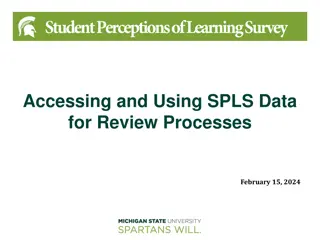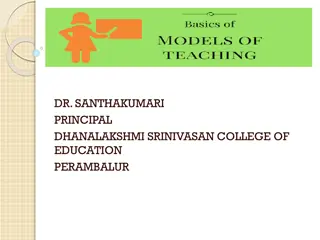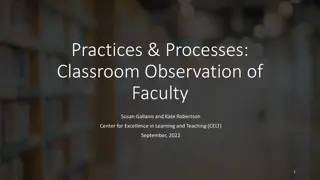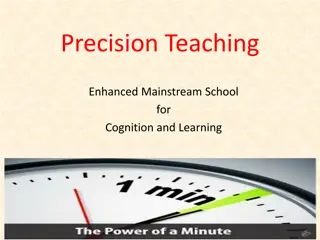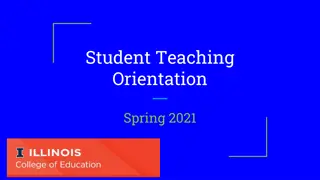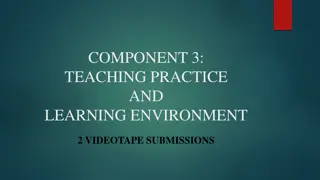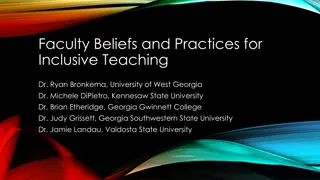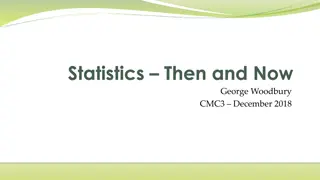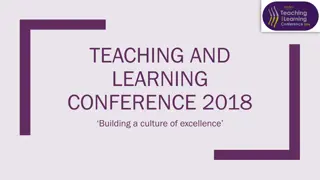
Exploring Teaching Methods and Learners' Needs in Prosody Studies
Dive into the world of prosody with insights on teaching methods, learners' needs, perception skills, production skills, interaction skills, and more presented in a tutorial at ACL 2021 by Nigel G. Ward and Gina-Anne Levow. Discover how prosody impacts communication and language learning strategies.
Download Presentation

Please find below an Image/Link to download the presentation.
The content on the website is provided AS IS for your information and personal use only. It may not be sold, licensed, or shared on other websites without obtaining consent from the author. If you encounter any issues during the download, it is possible that the publisher has removed the file from their server.
You are allowed to download the files provided on this website for personal or commercial use, subject to the condition that they are used lawfully. All files are the property of their respective owners.
The content on the website is provided AS IS for your information and personal use only. It may not be sold, licensed, or shared on other websites without obtaining consent from the author.
E N D
Presentation Transcript
Prosody Lecture 27: Teaching Prosody Nigel G. Ward, University of Texas at El Paso Gina-Anne Levow, University of Washington Tutorial presented at ACL 2021
configuration detection low-level perception attaining situation awareness knowledge communicative intent formulation turn management interlocutor meta-cognition plan execution, low-level control plan selection and assembly Aguirre, Ward, Avila 2022
Learners Needs: Summary Awareness
Learners Needs: Summary Awareness Facts
Learners Needs: Awareness Facts Perception skills Production skills Interaction skills Risk acceptance
Learners Needs Awareness Facts Low-Level Phonological Pragmatic Perception skills Production skills Interaction skills Risk acceptance
Learners Needs Awareness Facts Perception skills Production skills Interaction skills Risk acceptance
Learners Needs Awareness Facts Perception skills Production skills Interaction skills Risk acceptance
Teaching Methods Explanations with visualizations (c.f. Lecture 13) Practice with feedback . . .
Populations of Interest Native Speakers in high-stakes situations Public speaking Job interviews Effective listening Dating and relationships Steve Jobs, Wikimedia Commons Second-Language Learners Oliver Niebuhr et al, (2017)
Populations of Interest Native Speakers in high-stakes situations Public speaking Job interviews Effective listening Dating and relationships Second-Language Learners Deborah Tannen (1989)
Non-Native Speakers 40% of proficiency judgments are explained by prosody Many instances of friction may be due to prosody e.g. gravy vs gravy? paralinguistic phonological pragmatic commons.wikipedia.org (Kang 2010, Gumperz 1982)
NNSs Special Needs Overcoming habits Overcoming associations Overcoming fear
Teaching Constructions Specific, memorable examples e.g. peek-a-boo, excuse me reinforce with pairwork explain with diagrams critique their phonetic accuracy Generalization examples illustrating the range of typical uses joint discussion of the social contexts for use www.nigelward.com/prosody/
Perfecting Human Society through Prosody Empowering individuals Strengthening relationships Improving communication across cultures b Wikimedia Commons
Contents Introduction Production, Perception Classic Linguistic Prosody Technology and Techniques 26. Individual Differences Paralinguistics, Pragmatics 27. Teaching Technology, Part 2 28. Historical Perspective Perspectives 29. Prospects
Contents Introduction Production, Perception Classic Linguistic Prosody Technology and Techniques 26. Individual Differences Paralinguistics, Pragmatics 27. Teaching Technology, Part 2 28. Historical Perspective Perspectives 29. Prospects
Autism and Prosody Often perceived as odd in some way Some Types of Intervention: 1. Superficial corrections e.g. don t talk so loud , don t be so monotone 2. Perception exercises 3. Production practice
Teaching Needs Knowledge Perception skills, production skills Low-level Phonological Pragmatic Interaction skills Risk acceptance
Summary Teaching prosody: important, diverse, and difficult.
auditory feedback intention prosodic specification phoneme sequence proprioceptive feedback muscle control glottis articulators lungs [[ sound
Automation and Systematization For Assessment Dialog ability predictable from what? For Coaching Some advice is easy, e.g. Vary your pitch more Well-targeted feedback remains a challenge NB: every non-native speaker is different


